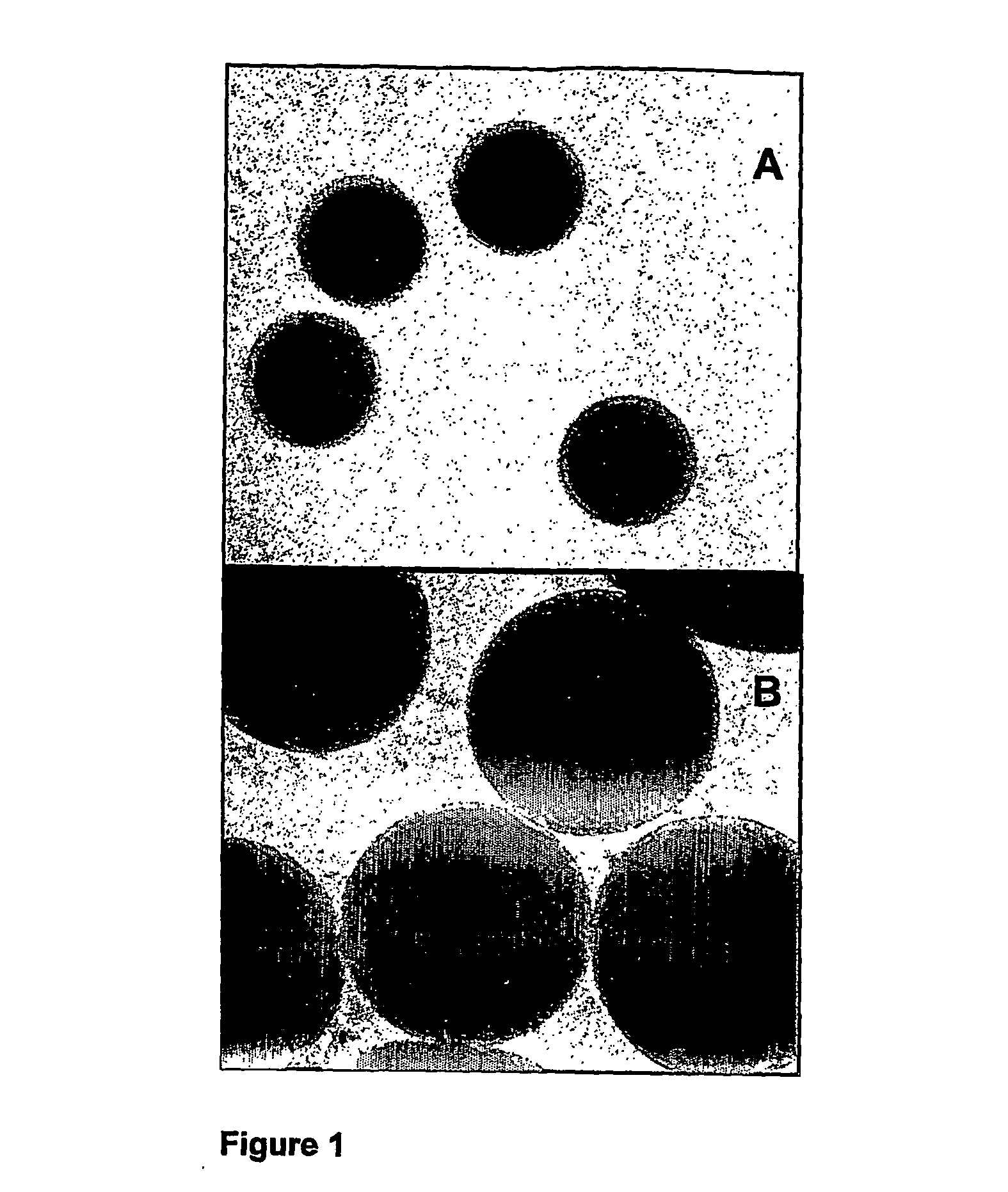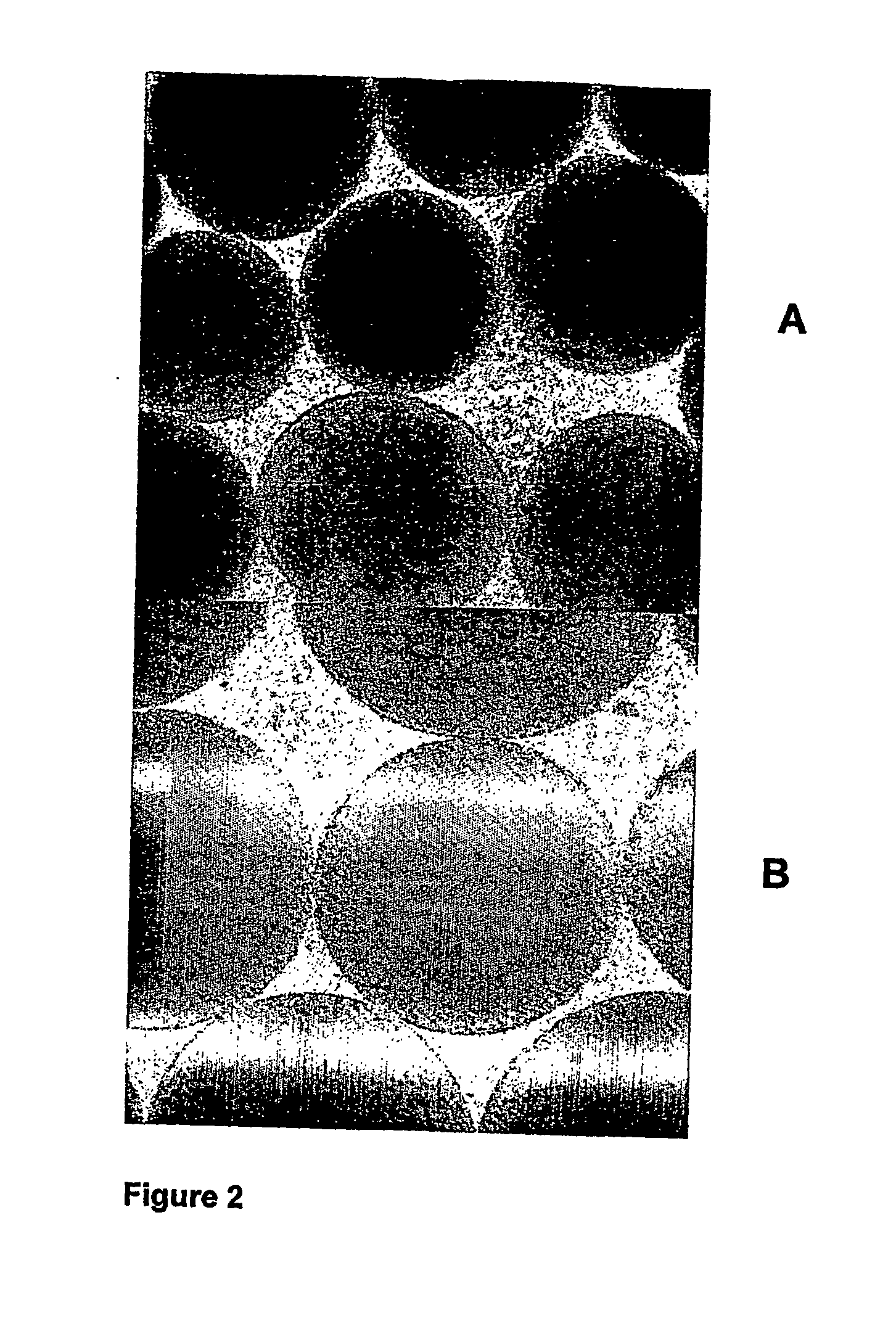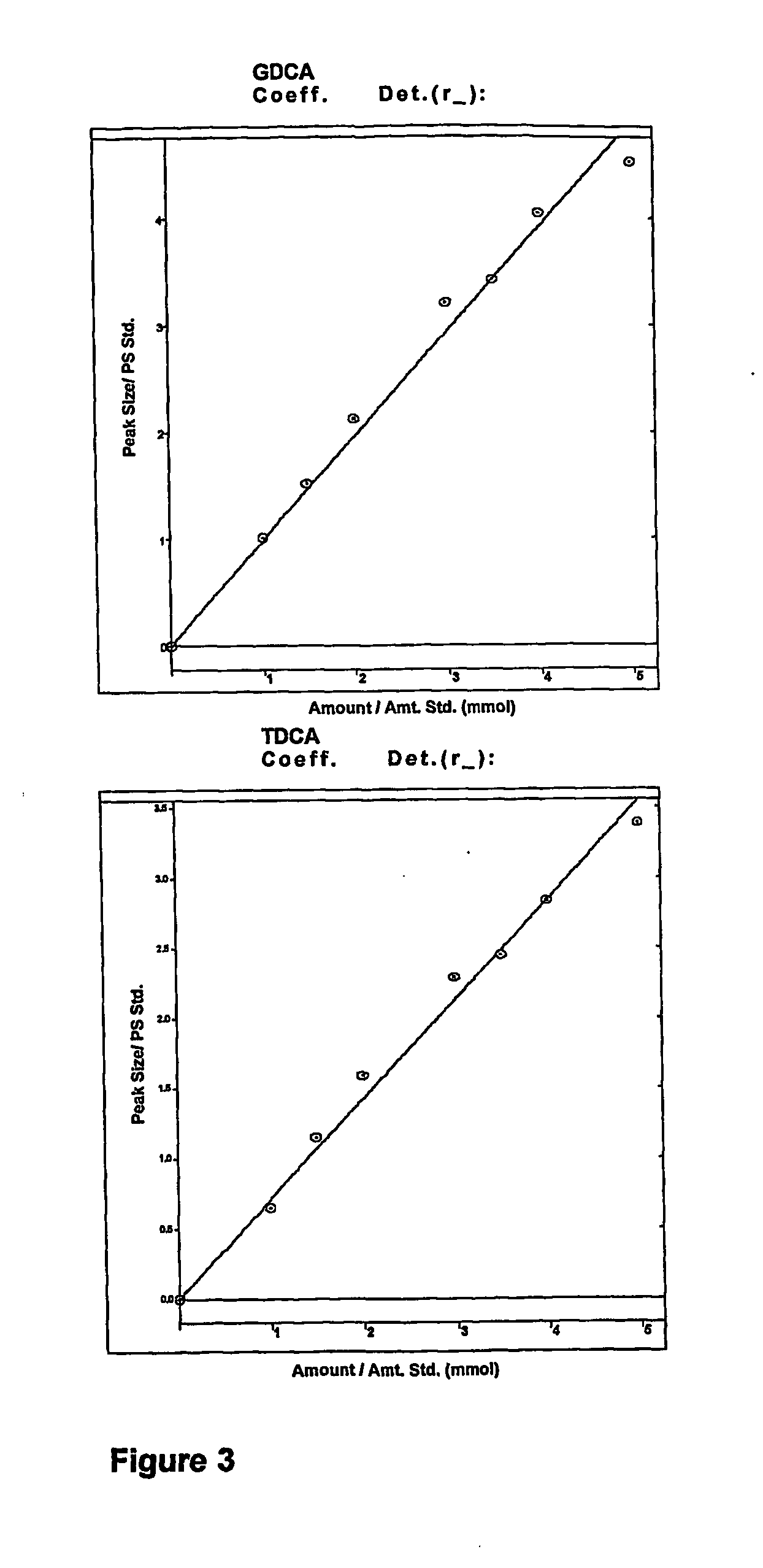Cell and enzyme compositions for modulating bile acids, cholesterol and triglycerides
a cell and enzyme technology, applied in the field of cell and enzyme compositions for modulating bile acids, cholesterol and triglycerides, can solve the problems of affecting the metabolism of enzymology, so as to reduce the level of target compounds, reduce the movement of target compounds, and reduce the effect of bile acid levels
- Summary
- Abstract
- Description
- Claims
- Application Information
AI Technical Summary
Benefits of technology
Problems solved by technology
Method used
Image
Examples
example 1
BSH Activity of Alginate Beads Containing Immobilized Lactobacillus Plantarum 80 (pCBHl)
[0174] To show the BSH activity of alginate beads containing immobilized LP80 (pCBH1), previously stored at 4° C., 5 g CDW of immobilized LP80 (pCBH1) was incubated in MRS broth supplemented with 10.0 mM GDCA and 5.0 mM TDCA. The concentration of bile acids was monitored by analyzing media samples at regular intervals over 24 hours. FIG. 4 shows superimposed HPLC chromatograms of bile acids in reaction media taken from one of the experiments at 0 h, 1 h, 2 h, 3 h, 4 h, 5 h, and 6 h. Decreasing peak areas of TDCA and GDCA bile acids indicate BSH activity of alginate beads containing immobilized LP80 (pCBH1). The internal standard was GCA and was the first peak eluted.
example 2
BSH Activity of Lactobacillus Plantarum 80 (pCBH1) Microcapsules
[0175] To show the BSH activity of microencapsulated LP80, previously stored at 4° C., and to show that microencapsulated LP80 (pCBH1) depletes high concentrations of bile acids, 5 g of microencapsulated LP80 (pCBH1) was incubated in MRS broth supplemented with 10.0 mM GDCA and 5.0 mM TDCA. The concentration of bile acids was monitored by analyzing media samples at regular intervals over 12 hours. FIG. 5 shows superimposed HPLC chromatograms of bile acids in reaction media taken from one of the experiments at 0 h, 1 h, 2 h, 3 h, 4 h, 5 h, and 6 h. Decreasing peak areas of TDCA and GDCA bile acids indicate BSH activity of LP80 (pCBH1) microcapsules. The internal standard was GCA and was the first peak eluted.
[0176] The BSH activity of 0.25 g CDW of microencapsulated LP80 (pCBH1) and 0.26 g CDW immobilized LP80 (pCBH1), both previously stored at 4° C., was determined and is shown in Table 1. The BSH activity of 0.25 g ...
example 3
Experimental Rat Model and In-vivo Experimental Procedure
[0180] The in-vivo animal study employs young male Wistar rats and shows the suitability of the microcapsule formulation for oral delivery of live genetically engineered LP80 cells and the efficacy of such encapsulated bacteria in lowering total cholesterol and improving the lipid profile. A standard procedure (Usman & Hosono, 2000) for making an elevated blood serum cholesterol rat model by feeding a cholesterol-rich diet is used. Although some effective CHD rat models exist, a model involving manual elevation of blood serum levels provides greater flexibility in controlling cholesterol.
[0181] For the in-vivo experimental protocol, 24 Wistar rats (Charles River Laboratories, USA), aged seven weeks and weighing 175-200 g at reception, are placed two per cage and fed Purina rat chow for 1 week in order to acclimate them to the facility (sterile room with controlled temperature (22-24° C.) and alternating light and dark cycle...
PUM
| Property | Measurement | Unit |
|---|---|---|
| cell dry weight | aaaaa | aaaaa |
| temperature | aaaaa | aaaaa |
| Tm | aaaaa | aaaaa |
Abstract
Description
Claims
Application Information
 Login to View More
Login to View More - R&D
- Intellectual Property
- Life Sciences
- Materials
- Tech Scout
- Unparalleled Data Quality
- Higher Quality Content
- 60% Fewer Hallucinations
Browse by: Latest US Patents, China's latest patents, Technical Efficacy Thesaurus, Application Domain, Technology Topic, Popular Technical Reports.
© 2025 PatSnap. All rights reserved.Legal|Privacy policy|Modern Slavery Act Transparency Statement|Sitemap|About US| Contact US: help@patsnap.com



